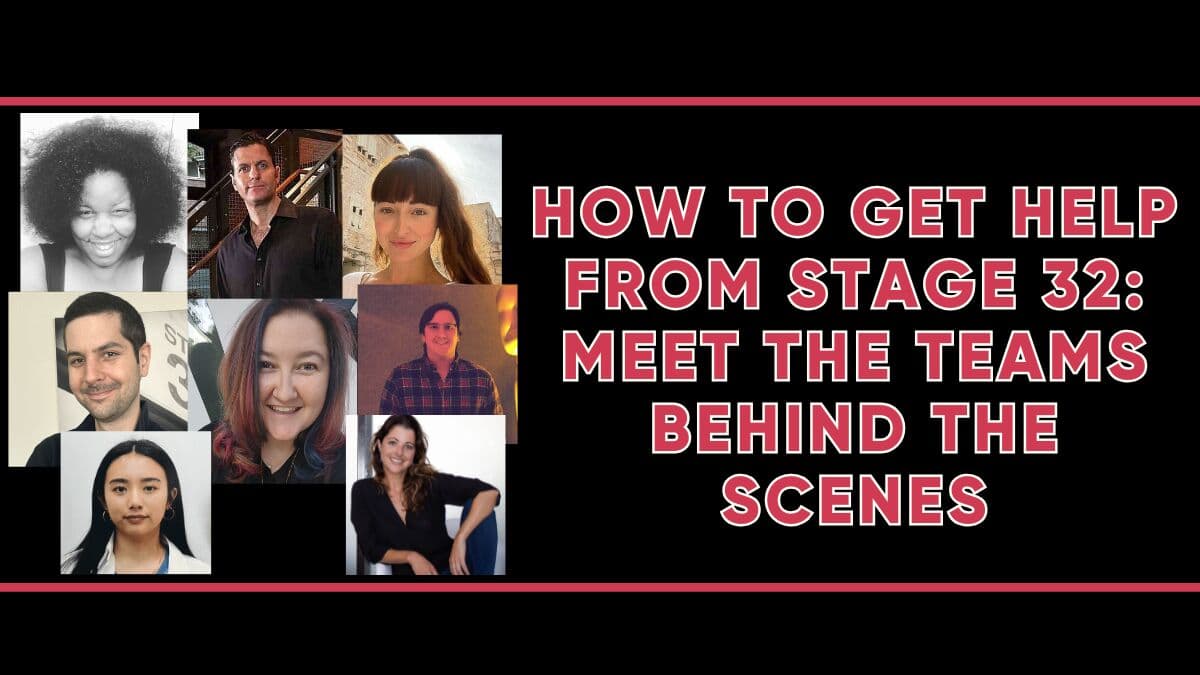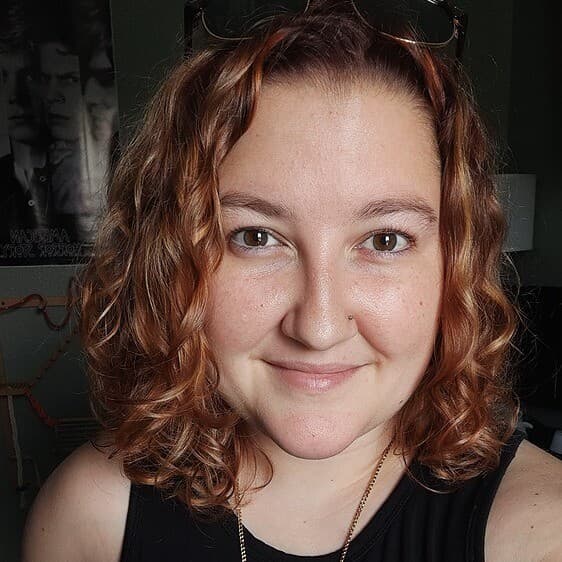How to Use A.I. to Turn Your Screenplay into a Podcast (and to get in front of Buyers, Agents & Producers Faster!)

How to Use A.I. to Turn Your Screenplay into a Podcast (and to get in front of Buyers, Agents & Producers Faster!)

THE PROBLEM
Starting in 2002, for the past 20 years to the present, during the evenings and weekends, I have been feverishly writing, adapting, and pitching a number of feature picture screenplays with no success in getting the projects greenlit or optioned neither by buyers, agents nor producers.
Meanwhile, all this time my day job has been in relatively non-creative realm of high-tech. Does this story sound familiar?
Every writer/filmmaker I've run into experiences a closed and inefficient entertainment industry. Moreover, there are technology barriers when trying to produce our screenplays as indie filmmakers. Are you facing some of these same pain points?
So, for 30 years on the day job working as a nerd on software projects, as a frustrated writer I started sharing my horror stories with my other nerd/writer friends.

THE SOLUTION
My friends and I all agree with the conclusion that with the recent advances of Artificial intelligence (AI) we can dramatically decrease the time to adapt a screenplay into a podcast; which is a significantly growing market segment, and will continue to do so, as media outlets are thirsty for additional original content.
The pro screenwriters at the WGA agree that the craft of scripted drama podcasting has such great Intellectual Property (IP) potential, that they have developed a whole curriculum and podcast on podcasting sharing industry best practices with the screenwriting community.
According to Molly Beer, Kaitlin Fontana, & the Writers Guild of America, East, "In the past five years, podcasts have exploded in popularity. You listen to them, and with over 700,000 active podcasts out there, chances are you or someone you know has a show of their own. A 2019 report by Edison Research found that 70% of the U.S. population has heard of podcasts and over 50% have listened to one. Fictional or scripted podcasts represent a small but steadily growing subset of the podcast industry. The Guild – and our members – have a lot of questions about this new frontier of scripted podcasting. Is it a lower-cost way to get a story known to the public… and to TV producers? Is it a viable, fulfilling way to create stories in its own right?"

Mike Disa in a recent Stage32 webinar supports the vision of how to Create Your Own Ip: How To Adapt Your Existing Script Into A Podcast As Proof Of Concept: "The huge story advantage of doing a podcast is that right now Hollywood agents are listening to them. They've got some heat under them. And, they don't care where you're from...where it was produced. They don't care if you have any credits behind you. Just the fact that it's a podcast right now is a safe mine for them to go digging in... So, the agencies are very, very serious about scooping these things up... All a podcast needs is listeners...people who like it. And, the studios, the agencies will notice it," Disa explains.
There are several ways that AI can help get your screenplay into an audio play or podcast in front of buyers, agents and producers dramatically faster and at a fraction of the cost, as illustrated in the workflow diagram below.

AI Automatically Turns Your Screenplay Into an Audio Play or Podcast!
Step 1: Convert Screenplay to Podcast Format
Our first opportunity for leveraging AI in our journey as screenwriters to get our 100-page screenplay into a multi-episodic podcast, by addressing the many formatting differences. As you have heard many times before the old saying that screenplays, unlike novels, are to "show not tell." Well, welcome to the podcasting world of the radio drama days of old, dating back to when H.G. Wells produced The War of the Worlds, which are "tell don't show" -- for our ears only.
A screenplay is a form of visual storytelling, whereas a podcast, like a radio drama or novel, needs to be told entirely through sound. This requires a big shift in our thinking; however, it's not that hard to do as one would think.
Try to stand in the shoes of your audience who are driving hands-free to work in their car, listening to a story being told on the radio. It's all about dialog, sound effects and some music, leaving the rest to the audience's imagination.
Ok, now for the re-formatting of your screenplay into that of a podcast format. First of all podcast dramas are so new that there are no industry standards for formatting. However, I have been searching for some industry "recommended practices" which helped to streamline the workflow.
So, I initially had an existing screenplay created in FinalDraft or MovieMagic with an .FDX file format, as illustrated in Example 1. Notice all of the description and action text are left-justified, and the character names and dialog are centered.

First of all, as the screenwriter it was up to me to determine where the breaks in my 108-page screenplay for each podcast episode would be placed. So, while I have the screenplay open in FinalDraft, I re-saved a copy of it using the podcast template.
The guideline I used was to use story plot points or beats that would align with 10 - 20 page breaks as "mini movies," with mini character arcs or "Hero's journeys," to roughly map out to 10 - 20 minute podcast air time episodes. For example, the "inciting incident" was a good cliff hanger to end the first episode, to start the next episode.
So, I copied the episode tag in FinalDraft, which has the format of being centered and in bold, as follows. As we will see later, this episode tag will be critical for the AI tool to recognize where to break out the large 100+ screenplay file into multiple episodic files.
The Naked Truce Podcast, Ep. 1
A significant part of my market research to determine recommended optimal re-formatting of an existing screenplay for podcast scripts was to interview a working voice over actor, who had much pain doing a pure voice over "reading" from my original screenplay. He insisted on the following re-formatting changes as illustrated in Example 2 above.
First, he requested that everything be left-justified. Second, a new "Narrator" character be created. Third, as an initial cut, all scene headings, description and action be converted as dialog under the new Narrator character. Of course there may be parts under the Narrator that may later be cut, however, these formatting changes make a voice over "read" so much easier for the VO actor.\

Remember, this is an iterative process, where you are just leveraging AI to speed up get your screenplay into a prototype podcast to try it out to see where you can make some "tweaks," before you bring spending a lot of money and time on live voice over actors.
Another important guideline is to keep podcast scenes to three or four characters, so your audience can easily follow your story. It's important to make each character have a unique voice/accent when adapting your screenplay into a podcast.
Extensible Markup Language (XML) tags is a simple text-based format for representing structured information identified based on the .FDX file format for FinalDraft screenplay files. So, we wrote an AI automation script to automate all of the above re-formatting as illustrated from the before screenplay format in Example 1 above, to the after podcast format in Example 2 above.
Step 2: Transform Text-to Voice Over Recordings with Speech Synthesis
The next step after re-formatting the text was to get the dialog text converted into auto-narrated voice over recordings. So, I started this Text-to Speech (TTS) experiment using Google’s speech synthesis API, which has an array of fairly convincing voices, first for the Narrator and other male and female characters, who can have different accents. Once you generate the voice over recordings, you want to download the MP3 files to you local drive to upload to your editing software, which we will cover later.
Google's TTS solution seemed to satisfy my use case of getting a minimal viable prototype (MVP) podcast recording for an early audio play of the script. It should be mentioned that Amazon Polly and Microsoft’s Azure also have text-to-speech solutions you can try out.
Also, keep in mind when trying out AI / Machine Learning apps, that these "machines" continue to "learn" to get more contextual, to simulate a good actor's voice inflections, etc. So, don't give up too soon if you cannot get the exact accent or contextual voice recording for your podcast. Keep experimenting with different voices and tools, as the technologies continual to improve.

Step 3: Recommend Music & Sound Effects
We need to be mindful that there’s more to a podcast episode than just the voice over narration and dialog. Audio drama podcasts also include strategic pauses, background music, fades, and sound effects, which poses an interesting problem for AI to help solve.
How do we use AI for music tracks and special effects (SFX) in a podcast script? There are a number of use cases from recommendations of audio to actual auto-generation. In these early experiments the technology is maturing in the Recommendation arena. You can also explore as to how AI can actually auto-generate music and sound effects.
It's up to you if you want to indicate where the musical interludes happen. At a minimum, you should have an "Intro jingle" at the beginning of your podcast episode, just prior to when the Narrator pipes in with the introduction of the sponsor. Then, add an "Outro jingle" at the end of your episode. You may have additional musical interludes throughout the episode.

When documenting special effects in your podcast script, use the abbreviation SFX, before describing the sounds.
YouTube has an audio library where you can access lots of free music and sound effects. There are also many websites where you can download both free and paid MP3 music and sound effects. Just remember less is more. The SFX are there only to help tell the story. It’s important that the SFX don’t steal the focus or become an annoying distraction for the audience.
Every fiction podcast has a signature sound or unique soundscape that helps tell the story. Some have a darker mood or tone with musical accents that utilize the sharp keys of a piano to create tension. Others embody lively atmospheres that sound youthful and cheerful. Don’t worry if you don’t yet know what your signature sound is—you'll find it as you develop and shape your podcast.
If you need help defining your audio signature tone, ask yourself:
If my story/podcast was a genre of music, would it be Hip Hop or Jazz or etc.?
What sounds would quickly identify my podcast's genre to the audience?
Think about the mood and tone of your story and remember, your listeners will likely expect to have a similar sonic experience each time they listen to your fiction podcast.
Just make sure you go through the script and remove all your “action” and add sound effects. This step would be a refinement of the initial screenplay-to-podcast script re-formatting, where all of the "action" and scene setup has been converted to "dialog" under the new Narrator character. So, you may want to replace some of the Narrator's "dialog" as SFX.
This brings us to where AI can help us podcast creators with recommendations that align with our signature music and sound effects, which can be a great time saver. EpicdemicSound has developed an AI sound recommender.

Step 4: Generate Poster Graphics for Video Track
As part of this screenplay-to-podcast prototype experiment, I wanted the poster artwork to be AI-generated too. Since the end state is to first upload a video file (MP4) podcast file to my YouTube channel, I needed to convert the MP3 audio file to MP4 video in order a YouTube compatible upload, since YouTube would not accept an MP3 file format.
In order to convert the file from MP3 to MP4, I needed a video track in addition to the voice over, music and sound effects' tracks.
So, I found this "DALL.E-mini" AI online app that would let you generate text-to-images using AI, which quickly created the below images after three attempts. As you can see with the same key words: "Transethnic rainbow skinned man," this AI tool learned to render three separate visual interpretations of my novel's/screenplay adaptation's main character.
Step 5: Edit Audio (MP3) + Poster Graphic: Convert to => Video (MP4)
The "DALL.E-mini" app allows you to download the image as a .png file, which I then uploaded to my favorite video editing app. For example, I used the online "WeVideo" editor.
I then stretched the .png graphic across the video 1 track for the full duration of the audio tracks, rendered the file as a video file.

Step 6: Upload to YouTube
While there are many podcast distribution outlets such as Audacity, Apple, Google, etc., I uploaded the podcast converted MP3->MP4 video file first to my YouTube channel, so I could get early feedback from my fan base, rather than having to build everything from scratch.
Once you have your first cut of a composite podcast "video" file that is upload-able to YouTube, then you can upload the file to your YouTube channel. Once the file is uploaded to YouTube, you can use the Editor in the YouTube Studio to do further trimming.
Step 7: Monetize on Google AdSense
Once you have your first cut of a composite podcast "video" file uploaded to your YouTube channel, then you can use the Editor in the YouTube Studio to add End Cards and Google Ads and AdSense to monetize your podcast.
In sum, with the recent advances of Artificial intelligence (AI), you can dramatically decrease the time to adapt your written story into a podcast; which is a significantly growing market segment, and will continue to do so, as media outlets are thirsty for additional original content.
It is my hope that this post will get you excited to join this new community of creators partnering with technologists. So, together we can have greater freedom to own the mean of production, to break through the barriers to prototype your screenplay as an audio play or podcast to get it in front of buyers, agents, and producers dramatically faster at a fraction of the cost.
Let's hear your thoughts in the comments below!
Got an idea for a post? Or have you collaborated with Stage 32 members to create a project? We'd love to hear about it. Email Taylor at taylor@stage32.com and let's get your post published!
Please help support your fellow Stage 32ers by sharing this on social. Check out the social media buttons at the top to share on Instagram @stage32 , Twitter @stage32 , Facebook @stage32 , and LinkedIn @stage-32 .
Take Stage 32 with you! Download the Stage 32 app for iOS here. Android User? Click here for the Stage 32 Android App!
About the Author

Greg Mandanis
Screenwriter
Original founder of YouExplainIt, a one-stop-shop online podcasting studio, with all the tools, training and expert advice, to help screenwriters transform their traditional feature screenplays into green-lit podcast productions that sell. Led Technicolor's Advanced Imaging Society's Lumiere 2015...










